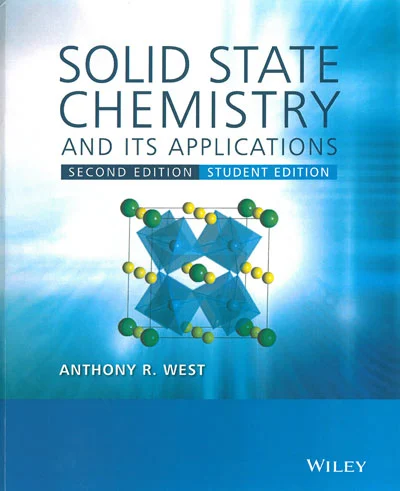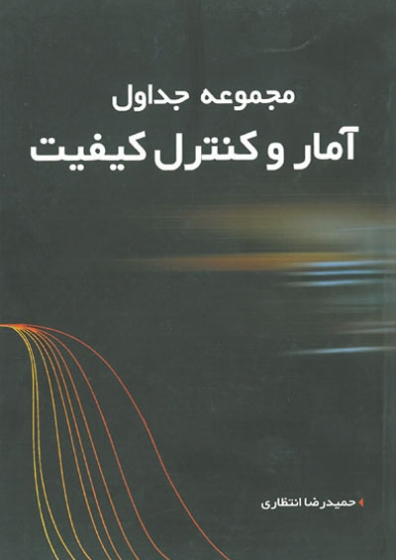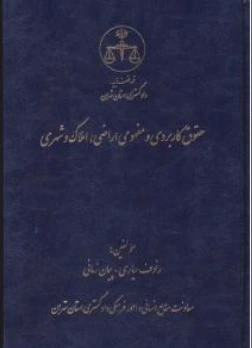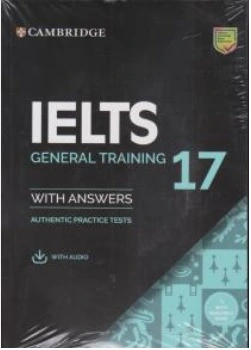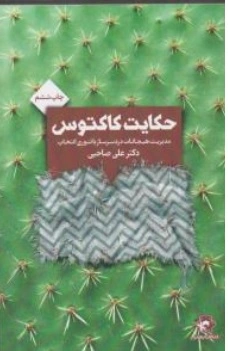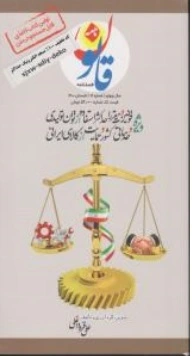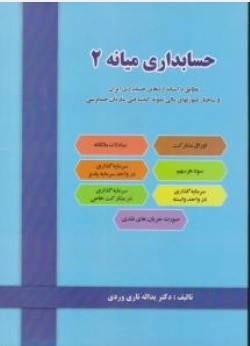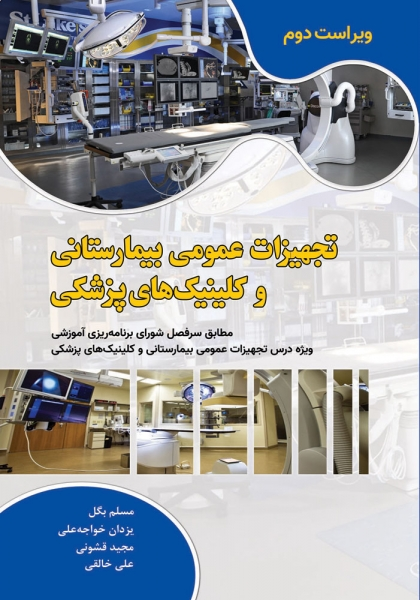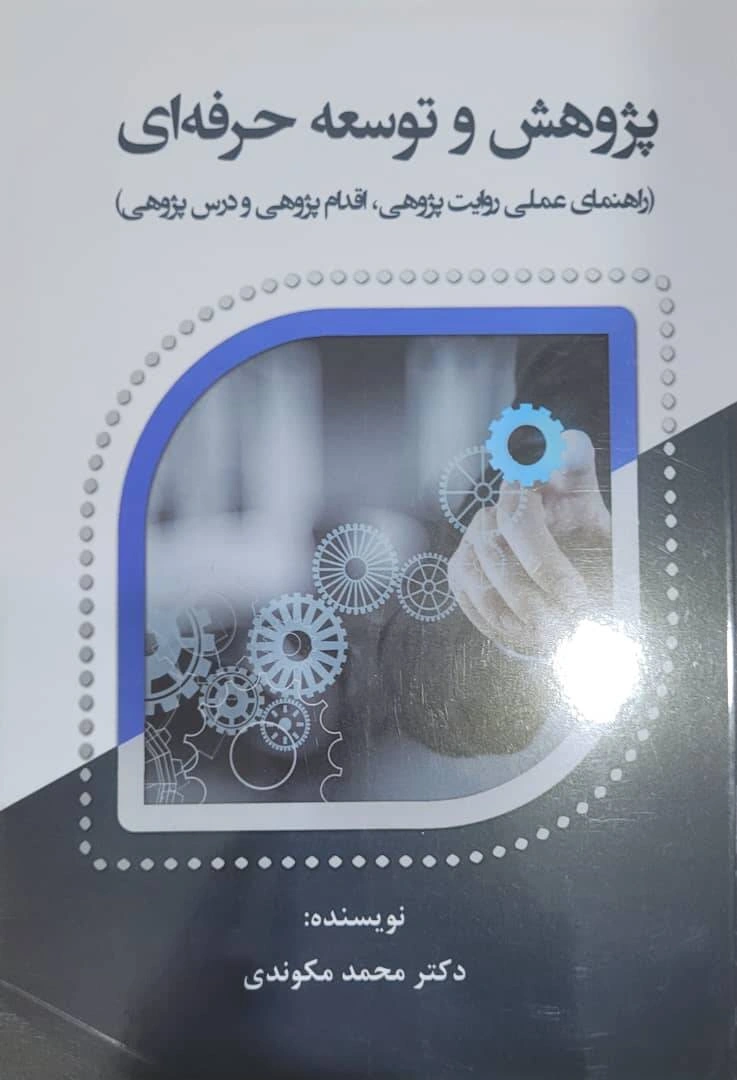Preface
This book is a slimmed down, student edition of ‘Solid State Chemistry and its Applications’ whose second
edition is scheduled for publication in 2015/6. It is modelled on the authors’ ‘Basic Solid State Chemistry’, but
has been completely rewritten with about 40% new material added and all the diagrams drawn professionally,
in full colour. The nine chapters in ‘Basic’ have become ten in this new edition since ‘Magnetic and Optical
Properties’ is split into separate chapters.
In the period since the second edition of ‘Basic’ was published in 1999, we have witnessed many major new
discoveries and developments in the solid state chemistry of inorganic materials with topics such as colossal
magnetoresistance, multiferroics, light emitting diodes and graphene. New materials synthesis techniques
have evolved such as mechanosynthesis, microwave-hydrothermal synthesis and atomic layer deposition and
of course, there have been many improvements in the techniques used to characterise solids including use
of synchrotrons for diffraction and spectroscopy as well as high resolution scanning transmission electron
microscopy permitting atomic-level identification and structural imaging. It was felt that an updated version
of both ‘Basic’ and ‘Solid State Chemistry and its Applications’ was long overdue, therefore.
A major feature of this new edition is the extensive coverage of the crystal structures of important
families of inorganic solids. Purchasers of the book will be able to download, free, a bespoke and easyto-
use CrystalMaker R _ viewer program. The CrystalViewer software is accompanied by more than 100
crystal structure models which users will be able to view on their computers with the facility to rotate the
structures, view them from different orientations and either highlight or hide different structural features.
CrystalViewer and the accompanying structure files can be downloaded from the companion website at
http://www.wiley.com/go/west/solidstatechemistrystudent.
Many people have helped and encouraged me in preparing this new edition. Special thanks are due to:
John McCallum who produced many of the crystal structure drawings and files, Frances Kirk who prepared
the whole manuscript, in electronic format, and Wiley staff Sarah Hall and Sarah Tilley for their enthusiastic
encouragement and involvement: in particular, Sarah Hall was instrumental in making the CrystalMaker R _
arrangements and Sarah Tilley oversaw all the artwork preparations.
Anthony R. West
Sheffield
July 2013
Contents
Preface xvii
Chemistry – Solid State Chemistry – Materials Chemistry – Materials Science and Engineering xix
Companion Website xxiii
CrystalViewer xxiii
Crystal Structure Library xxiv
Biography xxv
1 Crystal Structures and Crystal Chemistry 1
1.1 Unit Cells and Crystal Systems 1
1.2 Symmetry 3
1.2.1 Rotational Symmetry; Symmetry Elements and Operations 3
1.2.2 Quasicrystals 6
1.2.3 Mirror Symmetry 6
1.2.4 Centre of Symmetry and Inversion Axes 6
1.2.5 Point Symmetry and Space Symmetry 9
1.3 Symmetry and Choice of Unit Cell 10
1.4 Lattice, Bravais Lattice 11
1.5 Lattice Planes and Miller Indices 14
1.6 Indices of Directions 16
1.7 d-Spacing Formulae 17
1.8 Crystal Densities and Unit Cell Contents 17
1.9 Description of Crystal Structures 18
1.10 Close Packed Structures – Cubic and Hexagonal Close Packing 19
1.11 Relationship between Cubic Close Packed and Face Centred Cubic 21
1.12 Hexagonal Unit Cell and Close Packing 21
1.13 Density of Close Packed Structures 22
1.14 Unit Cell Projections and Atomic Coordinates 24
1.15 Materials That Can Be Described as Close Packed 25
1.15.1 Metals 25
1.15.2 Alloys 25
1.15.3 Ionic Structures 26
1.15.3.1 Tetrahedral and Octahedral Sites 26
1.15.3.2 Relative Sizes of Tetrahedral and Octahedral Sites 28
1.15.3.3 Location of Tetrahedral and Octahedral Sites in an fcc Unit Cell; Bond Length Calculations 29
1.15.3.4 Description of Crystal Structures; Fractional Atomic Coordinates 30
1.15.4 Covalent Network Structures 31
1.15.5 Molecular Structures 31
1.15.6 Fullerenes and Fullerides 31
1.16 Structures Built of Space-Filling Polyhedra 33
1.17 Some Important Structure Types 35
1.17.1 Rock Salt (NaCl), Zinc Blende or Sphalerite (ZnS), Fluorite (CaF2), Antifluorite (Na2O) 35
1.17.1.1 Rock Salt Structure 37
1.17.1.2 Zinc Blende (Sphalerite) Structure 38
1.17.1.3 Antifluorite/Fluorite Structure 39
1.17.1.4 Bond Length Calculations 41
1.17.2 Diamond 42
1.17.3 Wurtzite (ZnS) and Nickel Arsenide (NiAs) 43
1.17.4 Caesium Chloride (CsCl) 47
1.17.5 Other AX Structures 48
1.17.6 Rutile (TiO2), Cadmium Iodide (CdI2), Cadmium Chloride (CdCl2) and Caesium Oxide (Cs2O) 49
1.17.7 Perovskite (SrTiO3) 54
1.17.7.1 Tolerance Factor 57
1.17.7.2 BaTiO3 57
1.17.7.3 Tilted Perovskites: Glazer Notation 58
1.17.7.4 CaCu3Ti4O12, CCTO 62
1.17.7.5 Anion-Deficient Perovskites 62
1.17.7.6 Stoichiometry–Property Relations 62
1.17.8 Rhenium Trioxide (ReO3), Perovskite Tungsten Bronzes, Tetragonal Tungsten Bronzes and Tunnel Structures 63
1.17.9 Spinel 66
1.17.10 Olivine 70
1.17.11 Corundum, Ilmenite and LiNbO3 72
1.17.12 Fluorite-Related Structures and Pyrochlore 72
1.17.13 Garnet 75
1.17.14 Perovskite-Rock Salt Intergrowth Structures: K2NiF4, Ruddlesden–Popper Phases and Layered Cuprate Superconductors 76
1.17.15 The Aluminium Diboride Structure (AlB2) 80
1.17.16 Silicate Structures – Some Tips to Understanding Them 81
2 Crystal Defects, Non-Stoichiometry and Solid Solutions 83
2.1 Perfect and Imperfect Crystals 83
2.2 Types of Defect: Point Defects 84
2.2.1 Schottky Defect 85
2.2.2 Frenkel Defect 85
2.2.2.1 The Kroger–Vink Notation for Crystal Defects 86
2.2.2.2 Thermodynamics of Schottky and Frenkel Defect Formation 87
2.2.3 Colour Centres 90
2.2.4 Vacancies and Interstitials in Non-Stoichiometric Crystals: Extrinsic and Intrinsic Defects 91
2.2.5 Defect Clusters or Aggregates 92
2.2.6 Interchanged Atoms: Order–Disorder Phenomena 95
2.3 Solid Solutions 95
2.3.1 Substitutional Solid Solutions 96
2.3.2 Interstitial Solid Solutions 98
2.3.3 More Complex Solid Solution Mechanisms: Aliovalent Substitution 99
2.3.3.1 Ionic Compensation Mechanisms 99
2.3.3.2 Electronic Compensation: Metals, Semi- and Superconductors 102
2.3.4 Thermodynamically Stable and Metastable Solid Solutions 104
2.3.5 Experimental Methods for Studying Solid Solutions 104
2.3.5.1 X-ray Powder Diffraction, XRD 104
2.3.5.2 Density Measurements 105
2.3.5.3 Changes in Other Properties – Thermal Activity and DTA/DSC 107
2.4 Extended Defects 108
2.4.1 Crystallographic Shear Structures 108
2.4.2 Stacking Faults 110
2.4.3 Subgrain Boundaries and Antiphase Domains (Boundaries) 110
2.5 Dislocations and Mechanical Properties of Solids 111
2.5.1 Edge Dislocations 112
2.5.2 Screw Dislocations 114
2.5.3 Dislocation Loops 115
2.5.4 Dislocations and Crystal Structure 117
2.5.5 Mechanical Properties of Metals 118
2.5.6 Dislocations, Vacancies and Stacking Faults 120
2.5.7 Dislocations and Grain Boundaries 122
3 Bonding in Solids 125
3.1 Overview: Ionic, Covalent, Metallic, van der Waals and Hydrogen Bonding in Solids 125
3.2 Ionic Bonding 126
3.2.1 Ions and Ionic Radii 126
3.2.2 Ionic Structures – General Principles 130
3.2.3 The Radius Ratio Rules 133
3.2.4 Borderline Radius Ratios and Distorted Structures 135
3.2.5 Lattice Energy of Ionic Crystals 136
3.2.6 Kapustinskii’s Equation 140
3.2.7 The Born–Haber Cycle and Thermochemical Calculations 141
3.2.8 Stabilities of Real and Hypothetical Ionic Compounds 143
3.2.8.1 Inert Gas Compounds 143
3.2.8.2 Lower and Higher Valence Compounds 144
3.2.9 Effect of Partial Covalent Bonding on Crystal Structures 145
3.2.10 Effective Nuclear Charge 147
3.2.11 Electronegativity and Partially Charged Atoms 147
3.2.12 Coordinated Polymeric Structures – Sanderson’s Model 149
3.2.13 Mooser–Pearson Plots and Ionicities 150
3.2.14 Bond Valence and Bond Length 151
3.2.15 Non-Bonding Electron Effects 153
3.2.15.1 d-Electron Effects 153
3.2.15.2 Inert Pair Effect 161
3.3 Covalent Bonding 161
3.3.1 Particle-Wave Duality, Atomic Orbitals, Wavefunctions and Nodes 162
3.3.2 Orbital Overlap, Symmetry and Molecular Orbitals 163
3.3.3 Valence Bond Theory, Electron Pair Repulsion, Hybridisation and Oxidation States 169
3.4 Metallic Bonding and Band Theory 173
3.4.1 Band Structure of Metals 179
3.4.2 Band Structure of Insulators 179
3.4.3 Band Structure of Semiconductors: Silicon 179
3.4.4 Band Structure of Inorganic Solids 181
3.4.4.1 III–V, II–VI and I–VII Compounds 181
3.4.4.2 Transition Metal Compounds 182
3.4.4.3 Fullerenes and Graphite 184
3.5 Bands or Bonds: a Final Comment 185
4 Synthesis, Processing and Fabrication Methods 187
4.1 General Observations 187
4.2 Solid State Reaction or Shake ’n Bake Methods 187
4.2.1 Nucleation and Growth, Epitaxy and Topotaxy 188
4.2.2 Practical Considerations and Some Examples of Solid State Reactions 191
4.2.2.1 Li4SiO4 193
4.2.2.2 YBa2Cu3O7–δ 193
4.2.2.3 Na β/β __ alumina 193
4.2.3 Combustion Synthesis 194
4.2.4 Mechanosynthesis 195
4.3 Low Temperature or Chimie Douce Methods 196
4.3.1 Alkoxide Sol–Gel Method 196
4.3.1.1 Synthesis of MgAl2O4 197
4.3.1.2 Synthesis of Silica Glass 197
4.3.1.3 Spinning of Alumina Fibres 197
4.3.1.4 Preparation of Indium Tin Oxide (ITO) and Other Coatings 198
4.3.1.5 Fabrication of YSZ Ceramics 198
4.3.2 Sol–Gel Method Using Oxyhydroxides and Colloid Chemistry 198
4.3.2.1 Synthesis of Zeolites 199
4.3.2.2 Preparation of Alumina-Based Abrasives and Films 200
4.3.3 Citrate Gel and Pechini Processes 200
4.3.4 Use of Homogeneous, Single-Source Precursors 201
4.3.5 Hydrothermal and Solvothermal Synthesis 202
4.3.6 Microwave Synthesis 204
4.3.7 Intercalation and Deintercalation 205
4.3.7.1 Graphite Intercalation Compounds 207
4.3.7.2 Pillared Clays and Layered Double Hydroxides 208
4.3.7.3 Synthesis of Graphene 209
4.3.8 Example of a Difficult Synthesis Made Possible by Chimie Douce Methods: BiFeO3 211
4.3.9 Molten Salt Synthesis, MSS 212
4.4 Gas-Phase Methods 213
4.4.1 Vapour-Phase Transport 213
4.4.2 Chemical Vapour Deposition, CVD 216
4.4.2.1 Amorphous Silicon 217
4.4.2.2 Diamond Films 219
4.4.3 Sputtering and Evaporation 221
4.4.4 Atomic Layer Deposition, ALD 222
4.4.5 Aerosol Synthesis and Spray Pyrolysis 223
4.5 High-Pressure Methods 225
4.6 Crystal Growth 226
4.6.1 Czochralski Method 226
4.6.2 Bridgman and Stockbarger Methods 226
4.6.3 Zone Melting 227
4.6.4 Precipitation from Solution or Melt: Flux Method 227
4.6.5 Verneuil Flame Fusion Method 228
5 Crystallography and Diffraction Techniques 229
5.1 General Comments: Molecular and Non-Molecular Solids 229
5.1.1 Identification of Crystalline Solids 229
5.1.2 Structure of Non-Molecular Crystalline Solids 229
5.1.3 Defects, Impurities and Stoichiometry of Crystalline Solids 230
5.2 Characterisation of Solids 231
5.3 X-Ray Diffraction 232
5.3.1 Generation of X-Rays 232
5.3.1.1 Laboratory Sources Utilising Inner Shell Electronic Transitions 232
5.3.1.2 Synchrotron X-ray Sources 235
5.3.2 Interaction of X-Rays with Matter 235
5.3.3 Optical Grating and Diffraction of Light 236
5.3.4 Crystals and Diffraction of X-Rays 238
5.3.4.1 The Laue Equations 238
5.3.4.2 Bragg’s Law 239
5.3.5 X-Ray Diffraction Methods 240
5.3.6 The Powder Method – Principles and Uses 240
5.3.6.1 Focusing of X-rays: Theorem of a Circle 243
5.3.6.2 Crystal Monochromators 244
5.3.6.3 Powder Diffractometers 244
5.3.6.4 Guinier Focusing Cameras 245
5.3.6.5 A Powder Pattern of a Crystalline Phase is its ‘Fingerprint’ 246
5.3.6.6 Powder Patterns and Crystal Structures 247
5.3.7 Intensities 248
5.3.7.1 Scattering of X-rays by an Atom: Atomic Scattering Factors or Form Factors 249
5.3.7.2 Scattering of X-rays by a Crystal – Systematic Absences 250
5.3.7.3 General Equation for Phase Difference, δ 253
5.3.7.4 Intensities and Structure Factors 255
5.3.7.5 Temperature Factors 258
5.3.7.6 R-Factors and Structure Determination 259
5.3.7.7 Structure Refinement from Powder Data: Rietveld Refinement 259
5.3.8 X-Ray Crystallography and Structure Determination – What is Involved? 260
5.3.8.1 The Patterson Method 263
5.3.8.2 Fourier Methods 264
5.3.8.3 Direct Methods 264
5.3.8.4 Electron Density Maps 265
5.4 Electron Diffraction 265
5.5 Neutron Diffraction 266
5.5.1 Crystal Structure Determination 267
5.5.2 Magnetic Structure Analysis 268
5.5.3 Inelastic Scattering, Soft Modes and Phase Transitions 269
6 Other Techniques: Microscopy, Spectroscopy, Thermal Analysis 271
6.1 Diffraction and Microscopic Techniques: What Do They Have in Common? 271
6.2 Optical and Electron Microscopy Techniques 272
6.2.1 Optical Microscopy 272
6.2.1.1 Polarising Microscope 273
6.2.1.2 Reflected Light Microscope 276
6.2.2 Electron Microscopy 276
6.2.2.1 Scanning Electron Microscopy 280
6.2.2.2 Electron Probe Microanalysis, EPMA, and Energy-Dispersive X-ray Spectroscopy, EDS or EDX 281
6.2.2.3 Auger Electron (Emission) Microscopy and Spectroscopy, AES 282
6.2.2.4 Cathodoluminescence, CL 284
6.2.2.5 Transmission Electron Microscopy, TEM, and Scanning Transmission Electron Microscopy, STEM 287
6.2.2.6 Electron Energy Loss Spectroscopy, EELS 288
6.2.2.7 High-Angle Annular Dark Field, HAADF/Z-Contrast STEM 289
6.3 Spectroscopic Techniques 291
6.3.1 Vibrational Spectroscopy: IR and Raman 293
6.3.2 Visible and Ultraviolet (UV) Spectroscopy 296
6.3.3 Nuclear Magnetic Resonance (NMR) Spectroscopy 298
6.3.4 Electron Spin Resonance (ESR) Spectroscopy 301
6.3.5 X-Ray Spectroscopies: XRF, AEFS, EXAFS 303
6.3.5.1 Emission Techniques 303
6.3.5.2 Absorption Techniques 305
6.3.6 Electron Spectroscopies: ESCA, XPS, UPS, AES, EELS 308
6.3.7 M¨ossbauer Spectroscopy 312
6.4 Thermal Analysis (TA) 314
6.4.1 Thermogravimetry (TG) 315
6.4.2 Differential Thermal Analysis (DTA) and Differential Scanning Calorimetry (DSC) 315
6.4.3 Applications 317
6.5 Strategy to Identify, Analyse and Characterise ‘Unknown’ Solids 321
7 Phase Diagrams and their Interpretation 325
7.1 The Phase Rule, the Condensed Phase Rule and Some Definitions 325
7.2 One-Component Systems 330
7.2.1 The System H2O 331
7.2.2 The System SiO2 332
7.2.3 Condensed One-Component Systems 333
7.3 Two-Component Condensed Systems 333
7.3.1 A Simple Eutectic System 333
7.3.1.1 Liquidus and Solidus 335
7.3.1.2 Eutectic 335
7.3.1.3 Lever Rule 335
7.3.1.4 Eutectic Reaction 336
7.3.1.5 The Liquidus, Saturation Solubilities and Freezing Point Depression 337
7.3.2 Binary Systems with Compounds 337
7.3.2.1 Congruent Melting 337
7.3.2.2 Incongruent Melting, Peritectic Point, Peritectic Reaction 337
7.3.2.3 Non-Equilibrium Effects 339
7.3.2.4 Upper and Lower Limits of Stability 340
7.3.3 Binary Systems with Solid Solutions 340
7.3.3.1 Complete Solid Solution 340
7.3.3.2 Fractional Crystallisation 341
7.3.3.3 Thermal Maxima and Minima 342
7.3.3.4 Partial Solid Solution Systems 342
7.3.4 Binary Systems with Solid–Solid Phase Transitions 344
7.3.5 Binary Systems with Phase Transitions and Solid Solutions: Eutectoids and Peritectoids 345
7.3.6 Binary Systems with Liquid Immiscibility: MgO–SiO2 347
7.3.7 Some Technologically Important Phase Diagrams 348
7.3.7.1 The System Fe–C: Iron and Steel Making 348
7.3.7.2 The System CaO–SiO2: Cement Manufacture 349
7.3.7.3 The System Na–S: Na/S Batteries 350
7.3.7.4 The System Na2O–SiO2: Glass Making 351
7.3.7.5 The System Li2O–SiO2: Metastable Phase Separation and Synthetic Opals 352
7.3.7.6 Purification of Semiconducting Si by Zone Refining 353
7.3.7.7 The System ZrO2–Y2O3: Yttria-Stabilised Zirconia, YSZ, Solid Electrolyte 354
7.3.7.8 The System Bi2O3–Fe2O3: Multiferroic BiFeO3 354
7.4 Some Tips and Guidelines for Constructing Binary Phase Diagrams 355
8 Electrical Properties 359
8.1 Survey of Electrical Properties and Electrical Materials 359
8.2 Metallic Conductivity 361
8.2.1 Organic Metals: Conjugated Systems 362
8.2.1.1 Polyacetylene 362
8.2.1.2 Poly-p-Phenylene and Polypyrrole 364
8.2.2 Organic Metals: Charge-Transfer Complexes 365
8.3 Superconductivity 366
8.3.1 The Property of Zero Resistance 366
8.3.2 Perfect Diamagnetism; the Meissner Effect 368
8.3.3 Critical Temperature Tc, Critical Field Hc and Critical Current Jc 368
8.3.4 Type I and Type II Superconductors: The Vortex (Mixed) State 370
8.3.5 Survey of Superconducting Materials 371
8.3.6 Crystal Chemistry of Cuprate Perovskites 374
8.3.7 YBa2Cu3O7–δ , YBCO 376
8.3.7.1 Crystal Structure 376
8.3.7.2 Atom Valences and the Superconducting Mechanism 378
8.3.7.3 Oxygen Content of YBa2Cu3O7–δ 378
8.3.7.4 Determination of Oxygen Content, 7–δ 380
8.3.8 Fullerides 381
8.3.9 Applications of Superconductors 381
8.4 Semiconductivity 382
8.4.1 Elemental and Compound Semiconductors with Diamond and
Zinc Blende Structures 384
8.4.2 Electrical Properties of Semiconductors 386
8.4.3 Oxide Semiconductors 388
8.4.4 Applications of Semiconductors 389
8.5 Ionic Conductivity 392
8.5.1 Alkali Halides: Vacancy Conduction 393
8.5.1.1 Activation Energy for Ion Hopping: Geometric Considerations 394
8.5.1.2 Ionic Conductivity of NaCl Crystals 396
8.5.1.3 Extrinsic Conductivity in NaCl: Control by Aliovalent Doping 397
8.5.2 Silver Chloride: Interstitial Conduction 399
8.5.3 Alkaline Earth Fluorides 401
8.5.4 Solid Electrolytes (or Fast Ion Conductors, Superionic Conductors) 401
8.5.4.1 General Considerations 401
8.5.4.2 β-Alumina 403
8.5.4.3 Nasicon 409
8.5.4.4 Hollandites and Priderites 409
8.5.4.5 Silver and Copper Ion Conductors 411
8.5.4.6 Fluoride Ion Conductors 413
8.5.4.7 Oxide Ion Conductors 414
8.5.4.8 Li+ Ion Conductors 418
8.5.4.9 Proton Conductors 421
8.5.4.10 Mixed Ionic/Electronic Conductors 421
8.5.4.11 Applications of Solid Electrolytes and Mixed Conductors 422
8.6 Dielectric Materials 430
8.6.1 From Dielectrics to Conductors 433
8.7 Ferroelectrics 436
8.8 Pyroelectrics 441
8.9 Piezoelectrics 441
8.10 Applications of Ferro-, Pyro- and Piezoelectrics 441
9 Magnetic Properties 445
9.1 Physical Properties 445
9.1.1 Behaviour of Substances in a Magnetic Field 446
9.1.2 Effects of Temperature: Curie and Curie–Weiss Laws 448
9.1.3 Magnetic Moments 449
9.1.4 Mechanisms of Ferro- and Antiferromagnetic Ordering: Superexchange 452
9.1.5 Some More Definitions 453
9.2 Magnetic Materials, their Structures and Properties 455
9.2.1 Metals and Alloys 455
9.2.2 Transition Metal Monoxides 458
9.2.3 Transition Metal Dioxides 459
9.2.4 Spinels 459
9.2.5 Garnets 462
9.2.6 Ilmenites and Perovskites 464
9.2.7 Magnetoplumbites 464
9.3 Applications: Structure–Property Relations 464
9.3.1 Transformer Cores 464
9.3.2 Permanent Magnets 466
9.3.3 Magnetic Information Storage 466
9.4 Recent Developments 467
9.4.1 Magnetoresistance: Giant and Colossal 467
9.4.2 Multiferroics 469
10 Optical Properties: Luminescence and Lasers 473
10.1 Visible Light and the Electromagnetic Spectrum 473
10.2 Sources of Light, Thermal Sources, Black Body Radiation and Electronic Transitions 473
10.3 Scattering Processes: Reflection, Diffraction and Interference 476
10.4 Luminescence and Phosphors 476
10.5 Configurational Coordinate Model 478
10.6 Some Phosphor Materials 480
10.7 Anti-Stokes Phosphors 481
10.8 Stimulated Emission, Amplification of Light and Lasers 482
10.8.1 The Ruby Laser 484
10.8.2 Neodymium Lasers 485
10.8.3 Semiconductor Lasers and the Light-Emitting Diode, LED 486
10.9 Photodetectors 488
10.10 Fibre-Optics 490
10.11 Solar Cells 492
Further Reading 493
Appendix A: Interplanar Spacings and Unit Cell Volumes 505
Appendix B: Model Building 507
Appendix C: Geometrical Considerations in Crystal Chemistry 511
Appendix D: How to Recognise Close Packed (Eutactic) Structures 515
Appendix E: Positive and Negative Atomic Coordinates 517
Appendix F: The Elements and Some of Their Properties 519
Questions 525
Index 537


